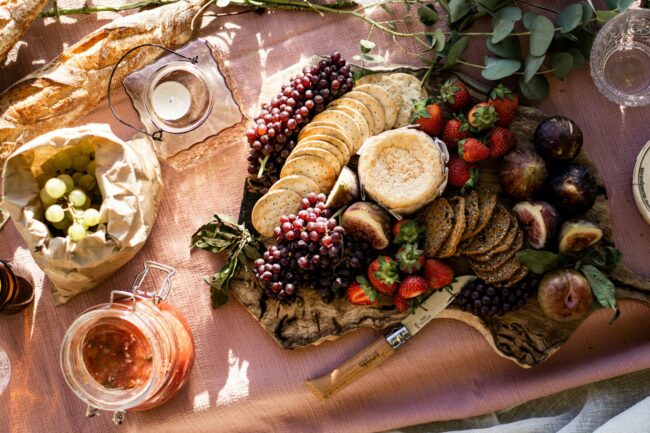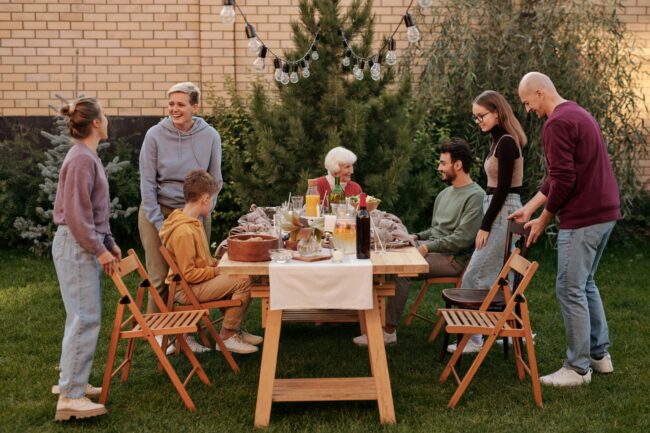Submitted by: Terri Kolb, Area 3 & 4 FoodWIse Administrator
Memorial Day Weekend marks the unofficial start to summer, to cookouts, camping, road trips and other activities that involve food. It is important to remember that bacteria grows faster in warm temperatures, so extra care needs to be taken to prevent food poisoning when preparing meals outside or away from home.
Due to a variety of factors, including warmer temperatures, foodborne illness increases in summer. Foodborne illnesses, often called food poisoning, is a common – yet preventable- public health problem. According to the Centers for Disease Control and Prevention (CDC) each year about 1 in 6 Americans (or 48 million people) get sick, 128,000 are hospitalized, and 3,000 die of foodborne diseases. To help Americans stay healthy and safe, USDA and the Division of Extension offer the following food safety recommendations.

Bringing Food to a Picnic or Cookout:
- Use an insulated cooler filled with ice or frozen gel packs. Frozen food can also be used as a cold source.
- Foods that need to be kept cold include raw meat, poultry, and seafood; deli and luncheon meats or sandwiches; summer salads (tuna, chicken, egg, pasta, or seafood); cut up fruit and vegetables; and perishable dairy products.
- A full cooler will maintain its cold temperature longer than a partially filled one. When using a cooler, keep it out of the direct sun by placing it in the shade or shelter.
- Avoid opening the cooler repeatedly so that your food stays colder longer.

Cooking on the Grill:
- Use separate cutting boards and utensils for raw meat and ready-to-eat items like vegetables or bread.
- Keep perishable food cold until it is ready to cook.
- Meats should be properly thawed in the refrigerator. This allows the meat to thaw slowly and keeps it at a safe temperature. If meats need to be thawed quickly us the “defrost” function on your microwave. Meats should not be left on the counter or outside to thaw.
- Proper grilling starts with a clean surface. Pre-heat your grill on high before adding food to kill bacteria that may be lingering on the grates. After pre-heating, clean the grill rack using aluminum foil or nylon brushes and inspect the surface for cleanliness before adding food.
- Use a food thermometer to make sure meat and poultry are cooked thoroughly to their safe minimum internal temperatures.
- Beef, Pork, Lamb, & Veal (steaks, roasts, and chops): 145 °F with a 3-minute rest time
- Ground meats: 160 °F
- Whole poultry, poultry breasts, & ground poultry: 165 °F
- Always use a fresh, clean plate and tongs for serving cooked food. Never reuse items that touched raw meat or poultry to serve the food once it is cooked.
- Throw out marinades and sauces that have touched raw meat juices, which can spread germs to cooked foods.

Serving Food Outdoors:
- Even in outdoor settings, wash hands, surfaces and utensils with soup and water before and after preparing meals.
- Perishable food should not sit out for more than two hours. In hot weather (above 90 °F), food should NEVER sit out for more than one hour.
- Serve cold food in small portions and keep the rest in the cooler. After cooking meat and poultry on the grill, keep it hot until served – at 140 °F or warmer.
- Keep hot food hot by setting it to the side of the grill rack, not directly over the coals where they could overcook.
For more information on current food safety topics visit: https://fyi.extension.wisc.edu/safefood/blog/
Learn more about the programs and services of UW-Madison Division of Extension Forest County at http://forest.extension.wisc.edu or call 715.478-7797.
Terri Kolb, FoodWIse Administrator
Forest, Florence, Oneida, Vilas, Lincoln, Langlade, Taylor and Price Counties
Office: 715-539-1073
Email: terri.kolb@wisc.edu





